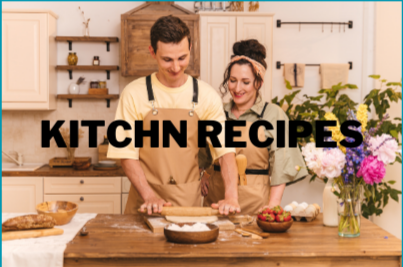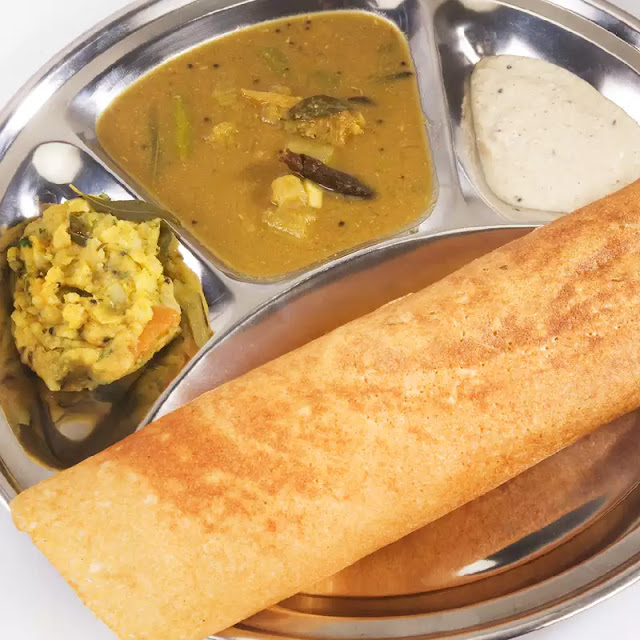रवा डोसा रेसिपी - Rava Dosa Recipe In English
rava dosa recipe
## Table of Contents
1. Introduction: Unveiling the Magic of Rava Dosa
2. The Art of Preparing Rava Dosa Batter
3. Perfecting the Cooking Process
4. Serving Suggestions and Nutritional Information
5. A Step-by-Step Guide: Rava Dosa Recipe
6. FAQs About Rava Dosa
## Introduction: Unveiling the Magic of Rava Dosa
If you're a fan of South Indian cuisine, then the delightful Rava Dosa must have tantalized your taste buds at some point. Known for its unique texture and irresistible flavor, this crispy crepe is a popular dish that can be enjoyed as breakfast, brunch, or even a light dinner. In this comprehensive guide, we'll walk you through the step-by-step process of creating the perfect Rava Dosa, ensuring that your culinary adventure is both delicious and rewarding.
## The Art of Preparing Rava Dosa Batter
Before you embark on your Rava Dosa journey, it's essential to prepare the batter just right. The key to achieving the characteristic crispy and lacy texture lies in the batter's composition and fermentation process. Here's how you can master the art of creating the ideal Rava Dosa batter:
### 1. Gathering Ingredients
To create the magic, you'll need the following ingredients:
- Semolina (Rava)
- Rice Flour
- All-Purpose Flour (Maida)
- Cumin Seeds
- Chopped Green Chilies
- Finely Chopped Ginger
- Freshly Chopped Coriander Leaves
- Asafoetida (Hing)
- Salt
- Water
### 2. Mixing and Fermenting
In a bowl, combine semolina, rice flour, all-purpose flour, cumin seeds, chopped green chilies, ginger, coriander leaves, asafoetida, and salt. Gradually add water to form a smooth, lump-free batter. Allow the batter to ferment for a few hours, enabling the flavors to meld and the batter to develop the desired consistency.
## Perfecting the Cooking Process
Creating the perfect Rava Dosa involves a certain finesse during the cooking process. Achieving the coveted crispy and lace-like texture requires attention to detail and patience.
### 1. Choosing the Right Pan
Select a non-stick skillet or a well-seasoned cast-iron pan for even heat distribution and to prevent sticking.
### 2. Heating the Pan
Heat the pan on medium-high flame.
Sprinkle a couple of drops of water on a superficial level - in the event that they sizzle and dissipate, the skillet is prepared.
### 3. Pouring and Spreading the Batter
Using a ladle, pour the batter onto the pan's center. Swiftly spread the batter in circular motions to form a thin and lacy crepe.
### 4. Drizzling Oil
Drizzle a teaspoon of oil around the edges and on the crepe's surface. Allow it to cook until the edges turn golden brown and crispy.
## Serving Suggestions and Nutritional Information
Rava Dosa's versatility extends beyond its preparation – it can be paired with an array of delectable side dishes. Whether you prefer tangy chutneys, spicy sambar, or cool yogurt, the choice is yours. Additionally, Rava Dosa is a relatively healthier option compared to traditional dosas, as it requires less oil during cooking.
**Nutritional Information (per serving):**
- Calories: XX kcal
- Carbohydrates: XX g
- Protein: XX g
- Fat: XX g
- Fiber: XX g
## A Step-by-Step Guide: Rava Dosa Recipe
### Section 1: Prep Time
Begin your Rava Dosa adventure by gathering and preparing all the necessary ingredients. This will guarantee a consistent cooking experience.
### Section 2: Cook Time
Master the art of spreading the batter, achieving the perfect crispiness, and flipping the dosa with finesse during the cooking process.
### Section 3: Total Time
Combining the prep and cook times, your delectable Rava Dosa will be ready to savor in no time.
### Section 4: Servings
This section provides guidance on adjusting ingredient quantities based on the number of people you're serving.
### Section 5: Nutrition Facts
Delve into the nutritional profile of Rava Dosa and discover its health benefits.
### Section 6: Ingredients
An in-depth look at the key ingredients that make Rava Dosa an absolute treat.
### Section 7: Directions
Follow our step-by-step directions to create a batch of mouthwatering Rava Dosas.
Read More:soulfood sunday dinner ideas
## FAQs About Rava Dosa
**1. Could I at any point utilize entire wheat flour rather than generally useful flour?**
Absolutely! While the texture may differ slightly, whole wheat flour can be a healthier alternative.
**2. Can I make the batter ahead of time?**
Certainly! Prepare the batter the night before and refrigerate it for a quick breakfast fix.
**3. Why is my dosa sticking to the pan?**
Ensure your pan is well-heated and seasoned. Additionally, using a non-stick pan or adding more oil can help prevent sticking.
**4. Can I add vegetables to the batter?**
Certainly! Finely grated carrots, chopped onions, or even spinach can add a delightful twist to your Rava Dosa.
**5. How do I store leftover batter?**
Refrigerate the batter in an airtight container for up to two days, but remember, freshly made batter yields the best results.
6.Which soda is used in dosa?
1.lene 2.dosa 3.soda 4.puri 5.idli
1. Dosa is a delicious Indian dish made with a fermented crepe batter and traditionally served with a variety of savory fillings and chutneys.
2. Soda is a carbonated beverage that is often used as a mixer for alcoholic drinks.
3. Dosa is a popular South Indian dish made from a fermented crepe batter and typically served with potato filling and chutneys.
4. Puri is an Indian fried bread that is often served with dosa.
5. Idli is a steamed rice cake that is popular in South Indian cuisine and is often served with dosa.
7.How is dosa eaten?
A delicious South Indian breakfast dish, dosa is usually eaten with chutney and sambar.
8.How many types of dosa are there?
A guide to the different types of dosa available, from the classic plain dosa to the more unusual masala dosa.










Post a Comment